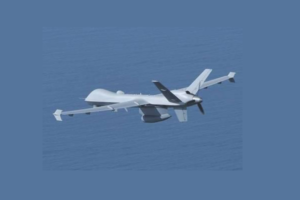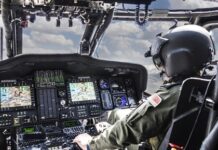
HIGHLIGHTS:
- UAVs are major force-multipliers for surveillance & real-time imagery, data to direct fire at targets.
- Range from hand-launched micro UAVs to fighter-size UCAVs.
- Stealthy & cost-effective. No risk of aircrew being killed.
NEW DELHI: India’s quest for advanced surveillance drones to keep a hawk-eye on the Indian Ocean Region will now be met through the proposed acquisition of Predator naval drones from the US. But what it really wants is combat drones or unmanned combat aerial vehicles (UCAVs) in the long run.
Akin to fighter jets but remotely controlled through satellites from thousands of miles away, combat drones are capable of firing missiles and precision-guided munitions on enemy targets before returning to their home bases to re-arm for the next mission.
Their game-changing impact on modern-day warfare can be gauged from the way the US has been extensively using Predator and Reaper armed drones to fire deadly `Hellfire’ missiles against Taliban targets in the Af-Pak region with devastating effect.
But India, as of now, is in talks with the US for only unarmed Predator or MQ-9B Guardian unmanned aerial vehicles (UAVs), which are high-altitude, long-endurance drones capable of flying non-stop for over 27 hours for intelligence, surveillance and reconnaissance missions. This, too, became possible only after India joined the 34-member Missile Technology Control Regime, which prevents proliferation of missiles and UAVs over the range of 300-km, in June 2016.
Ahead of PM Narendra Modi’s ongoing trip to Washington, the Trump administration had cleared the sale of 22 MQ-9B Guardian drones manufactured by General Atomics to India, in what will eventually be a government-to-government deal after the US Congress is first notified and long-drawn bilateral negotiations are then held.
Though figures upwards of $2 billion for the 22 drones, with their associated spares, maintenance and training package, are already being quoted, Indian government sources say the actual procurement process is yet to begin.
“The US has just responded to our ‘price and availability inquiry’. It’s early days yet,” said a source. While India is slated to become the first country outside the NATO alliance to get these drones, Washington is so far unwilling to sell actual combat or armed drones to New Delhi because it believes the move will disrupt the military balance in the region.
India, however, is on course to acquire 10 Heron-TP missile-armed drones for around $400 million from Israel, even as PM Modi is scheduled to visit the Jewish state early next month, as was earlier reported by TOI.
The IAF already has Israeli Harop “killer” drones, which basically act as cruise missiles to first detect and then destroy specific enemy targets and radars by exploding into them in kamikaze fashion. Some of the existing Indian fleet of Israeli Heron and Searcher-II UAVs have also been upgraded with “add-ons” to ensure they can undertake a combat mission over and above their current surveillance and precision-targeting roles.
The DRDO-Aeronautical Development Agency combine has also launched the Rs 2,650 crore “Ghatak” project to develop an Indian Unmanned Strike Air Vehicle, with the government approving an initial Rs 231 crore for its design and development of critical advanced technologies in May 2016.
But it will take well over a decade for the Ghatak UCAV, which will weigh less than a fighter jet since it will be “more of a flying-wing in design”, to take to the skies. The IAF, incidentally, has proposed the creation of a separate cadre to handle UAVs, apart from the flying, technical and ground duty branches, in the future.
Source: timesofindia.indiatimes.com


















